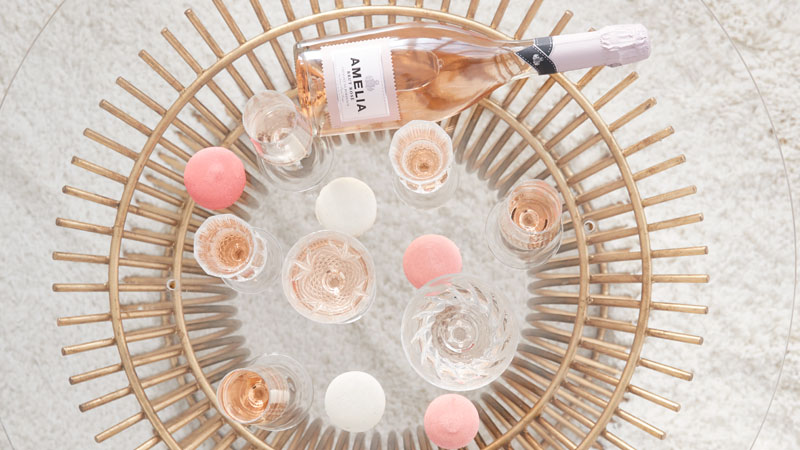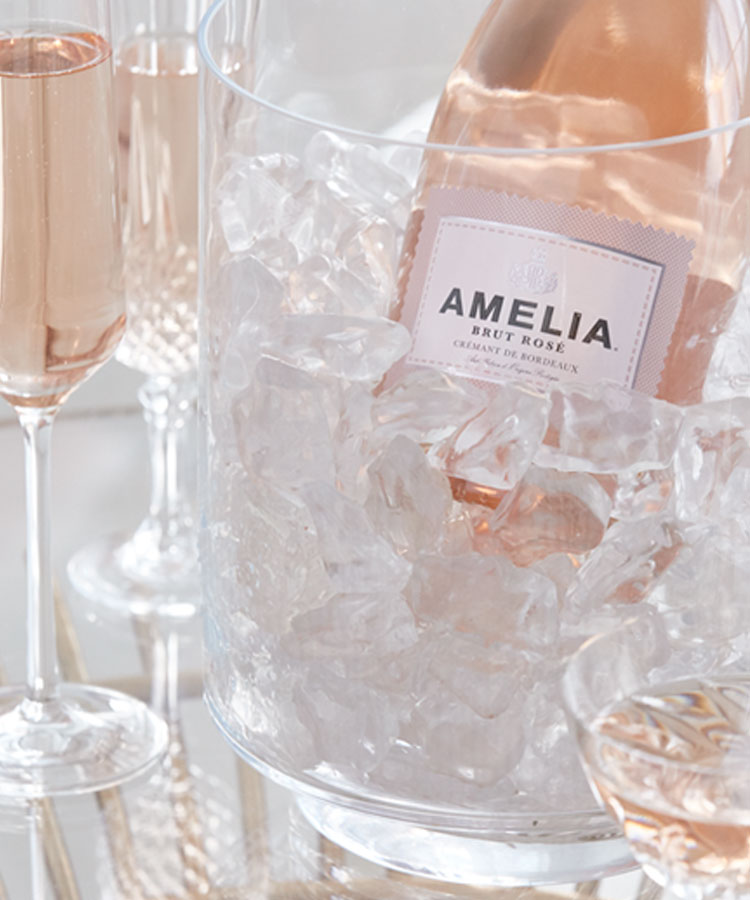
We’ve all been there. It’s Friday. You’re hosting a party tomorrow night and don’t know what to do. Well, first, you should get food. Any food. People definitely need food. But what should they drink? You comb the aisles searching for answers. The light bulb goes off and you book it to the wine store.
Wines are like tools. Each one serves a different purpose. T-bone steak on the grill tonight? Get yourself a big California Cab. Decadent cheesecake for dessert? Pour a little Sauternes.
Apple wine aside, luckily there’s a wine with the qualities of a diamond: sturdy, multifaceted, and beautiful in any occasion. And that’s precisely why you should enjoy Amelia’s brut sparkling rosé.
THE WHY (NOT?)
Are you shaking your head? Are you “so done with rosé, Kristen”? Let’s get something straight, bub: Rosé never dies. It never takes a timeout. You think it just sits around in your fridge waiting for warmer climes? No way rosé. It’s evergreen, perennial, a 365-days-a-year kind of wine. Drink it poolside with friends or on inch seven of the blizzard of the year. We’ve had enough of the Instagram photos but keep the pink stuff pouring.
THE HOW
Amelia comes from the maritime, temperate climate and gravelly soil of Bordeaux, France. And while everyone gets all hot and bothered about Right Bank or Left Bank, we’re content to gently edge the cork out of a bottle of brut rosé and kick our feet up.
Now, we all know that Champagne is delicious. But if you want to taste something as good if not better and don’t want to pay a month’s salary, we’re happy to introduce you to your new sparkling love: Crémant.

By French law, any sparkling wine worthy of crémant status has to be harvested by hand and made in the labor-intensive but centuries-old way of fermenting in the bottle known as méthode traditionelle, a.k.a. méthode ancienne, a.k.a. méthode classique, a.k.a. make ze good stuff, oui?
After the Merlot (85 percent) and Cabernet Franc (15 percent ) grapes are harvested, it has to, you know, become wine before adding the bubbles.
The first fermentation (cuvée) occurs and it’s left to age sur lie for two months. Lie, or in English, lees, are the dead yeast that gives the bubbly wine you love character and texture. After the wine is bottled, it’s time for tirage aging. This is where the Old-World method differs from the more industrial tank method. Crémant laws only require nine months of aging, but Amelia’s complexity comes from the extra nap time. The winemakers add yeast and sugar and let nature do its thing for the next 18 months.
The bottles are riddled or turned gently about as to direct the lees toward the neck for easy removal. All you have to do afterward is add a bit of wine and sugar (approximately 12 or less grams per liter for brut), cork it, and you’re ready to party.
THE GOOD STUFF
If you’re worried about the bubbles after last week’s brunch, have no fear. With the méthode traditionelle bottle fermentation, the effervescence leans more toward the elegant and gentle and less Fresca-esque that whittles your teeth down.
Amelia’s sparkling rosé is medium in body with lively acidity. It’s delicate but not invisible. The classic Bordeaux grapes of Merlot and Cab Franc give the wine strawberry, plum, and ripe raspberry flavors on the palate and the extra time on the lees gives it notes of toasted brioche and a soft, creamy finish. Besides its taste, the versatility is this wine’s best attribute. With fresh seafood like oysters or shrimp, the crisp, gentle red fruits nicely complement the briny goodness. If you’re more in a duck, chicken, or pork kind of mood, especially with a fruit-based sauce, the effervescence and acidity act as the perfect palate cleanser with the plum and raspberry notes counterbalancing the meat.
Or just drink it on its own. We support you.
We sure hope you don’t see seven inches of snow this year, but if you are hunkered down in a blizzard with shrimp cocktail, duck à l’orange, or — heaven forbid — an empty glass, just get a bottle of Amelia, pop the cork, and enjoy.
This article is sponsored by Amelia Brut Rosé.
